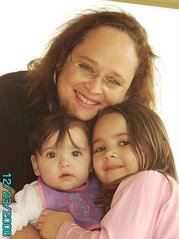Brown and others suggest that we teach the way that we were taught. Think back on your own language learning experience and discuss the setting (formal or informal) and age you were and what theory do you think informed your instruction. Have you found yourself teaching the same way that you were taught? If you have learned more than one language, compare the differences in the learning experiences.
There is a tendency among language (and perhaps all) teachers to do this to some extent, particularly at the beginning of their teaching experience. It appears to be a natural instinct to bring in our personal experiences. What is interesting to me is that we do this, no matter whether or not we felt that it was effective instruction.
In my case, as a second language learner of Spanish, my language classes in K-12 were taught in a predictable fashion that most closely resembled, and surely came out of, the Grammar-Translation Method. As Brown states, this method "does virtually nothing to enhance a student's communicative ability in the language (p.16)." I would have to agree with this comment. It felt like rote memorization, and the goal most certainly did not seem to be communicating with anyone in Spanish! I am fortunate to have studied Spanish again in college, and after the first (Grammar-Translation-esque) semester, I took a wonderful conversation and culture course, followed by a school trip to Mexico, and I FINALLY got it!! I started speaking Spanish in my sleep almost immediately, felt highly motivated in class, and began speaking to the locals in Merida right away. I loved my own language and I am very social, so when it meant the means of expressing myself and understanding others, I had immediate buy-in. I went back to school, changed my minor to Spanish, and have been traveling and learning languages ever since. It is amazing to me that those two months essentially changed my life!
Later, when taking Korean and Mandarin (Chinese) classes, I realized that there was definitely a way my teachers taught that helped me learn and a way that left me frustrated and baffled. I have great empathy for my students because of this, and always try to keep in mind what they must be feeling and how well they are progressing. Because of this, as a teacher, I have always tried to emulate the more communicative method that I learned so much from in college, tying meaning into form and getting students to interact with each other as much as possible. As I have had the chance to work with and observe many wonderful, bright, and talented ESL/EFL teachers throughout my career, I have incorporated many of their great ideas and methods. Teachers should always be willing to learn more about teaching and to improve themselves, their methods, etc. The more open we are to new ideas, the better we can refrain from falling back on teaching the way we learned (or didn't learn) our second or third or fourth languages.
Tuesday, June 5, 2007
Subscribe to:
Post Comments (Atom)


No comments:
Post a Comment